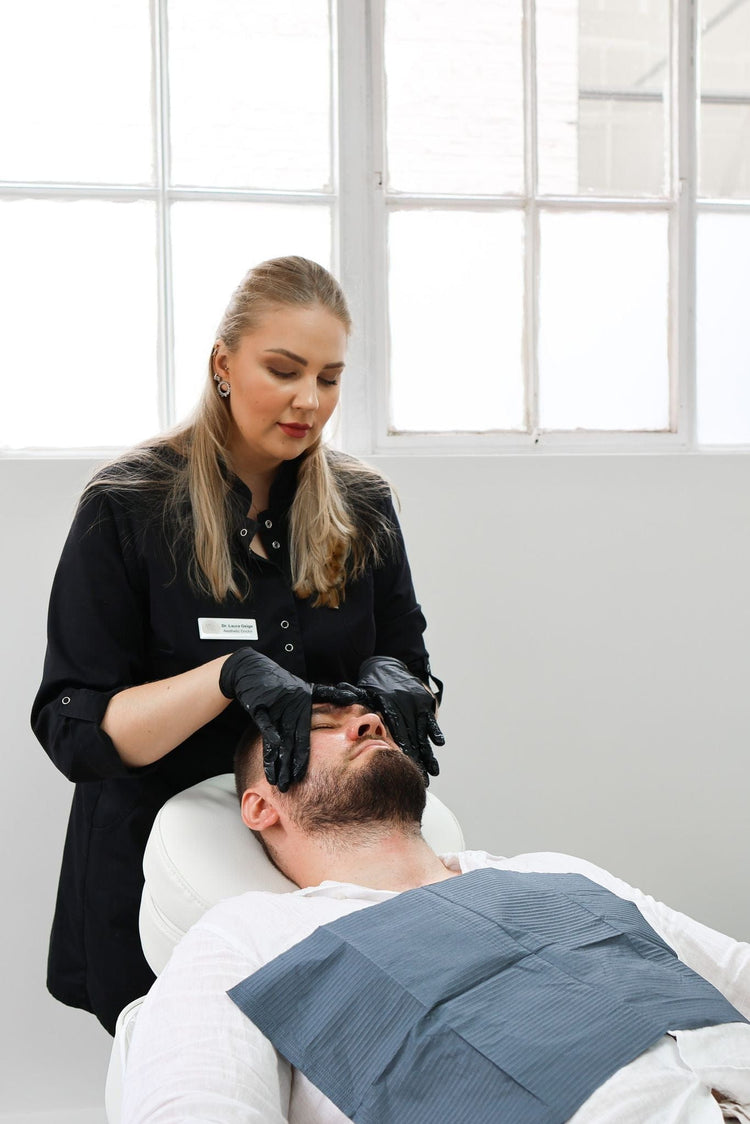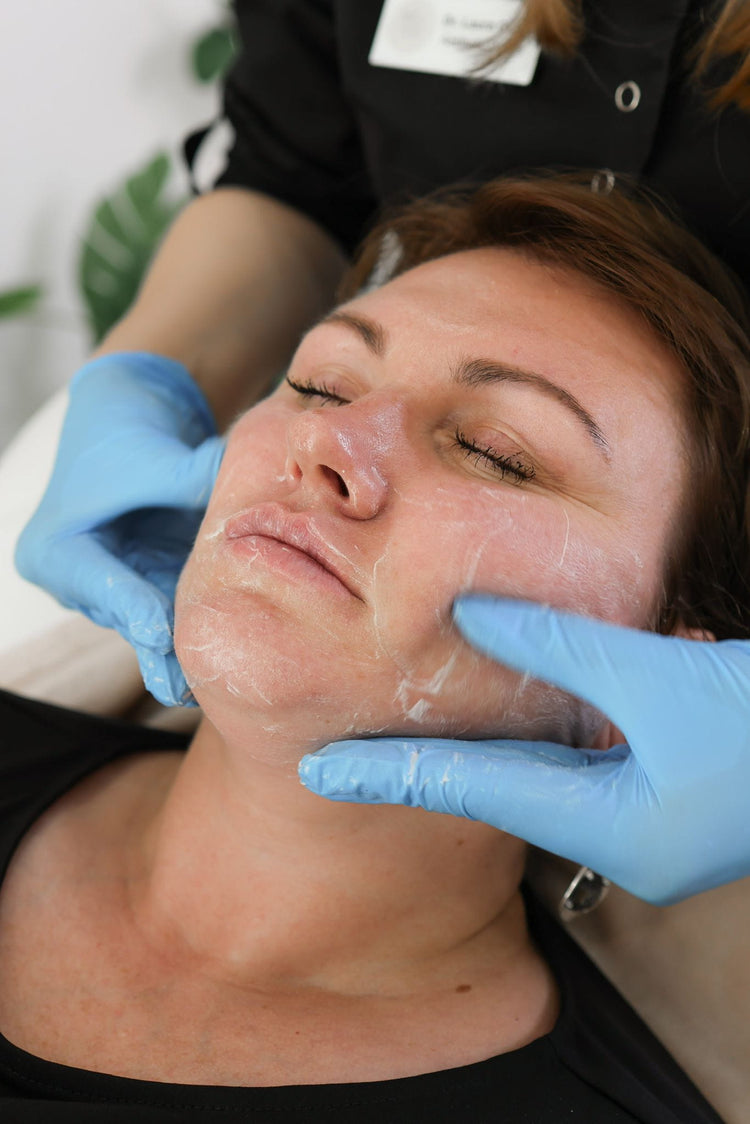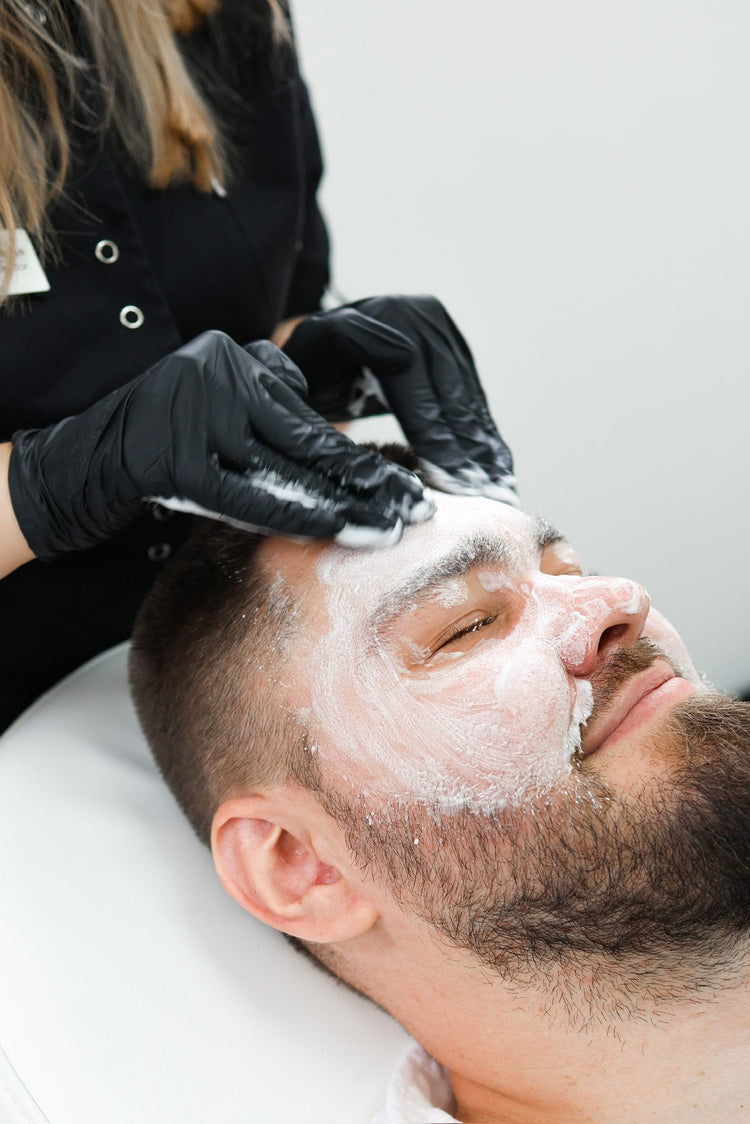Skin Assessment
Understanding your skin’s unique characteristics is the foundation of any effective skincare routine. Skin assessments provide valuable insights into your skin’s current condition, revealing its elasticity, hydration levels, and any potential concerns. Through careful observation and analysis, a skincare consultation can pinpoint the specific needs of your skin, allowing for tailored recommendations and solutions to address issues like loss of firmness or sagging.
Medical History Review
A thorough skin assessment involves a comprehensive evaluation of various factors, including skin tone, texture, and elasticity. Professionals trained in skincare will examine the skin’s surface for signs of aging, such as fine lines, wrinkles, and loss of firmness. They may also assess hydration levels by observing skin moisture and smoothness.
Beyond the visual examination, a detailed medical history review is crucial. This includes inquiries about past skincare routines, any existing medical conditions, medications, and potential allergies. Understanding your individual background helps identify potential contributing factors to elasticity issues and allows for personalized recommendations that are safe and effective.
Visual Examination
Assessing skin elasticity during a consultation involves both visual observation and inquiry into your personal history. A trained professional will look for signs of diminished elasticity, such as fine lines, wrinkles, sagging, or uneven texture. They may gently pinch the skin to evaluate its firmness and spring back.
Beyond physical examination, a detailed discussion about your skincare habits, lifestyle, and medical history is essential. This helps pinpoint potential contributing factors to elasticity issues. Questions might include your current skincare routine, sun exposure history, diet, stress levels, and any relevant medical conditions or medications.
Skin Type and Concerns
Understanding your skin’s unique characteristics is the foundation of any effective skincare routine. Skin assessments provide valuable insights into your skin’s current condition, revealing its elasticity, hydration levels, and any potential concerns. Through careful observation and analysis, a skincare consultation can pinpoint the specific needs of your skin, allowing for tailored recommendations and solutions to address issues like loss of firmness or sagging.
A thorough skin assessment involves a comprehensive evaluation of various factors, including skin tone, texture, and elasticity. Professionals trained in skincare will examine the skin’s surface for signs of aging, such as fine lines, wrinkles, and loss of firmness. They may also assess hydration levels by observing skin moisture and smoothness.
Beyond the visual examination, a detailed medical history review is crucial. This includes inquiries about past skincare routines, any existing medical conditions, medications, and potential allergies. Understanding your individual background helps identify potential contributing factors to elasticity issues and allows for personalized recommendations that are safe and effective.
Assessing skin elasticity during a consultation involves both visual observation and inquiry into your personal history. A trained professional will look for signs of diminished elasticity, such as fine lines, wrinkles, sagging, or uneven texture. They may gently pinch the skin to evaluate its firmness and spring back.
Beyond physical examination, a detailed discussion about your skincare habits, lifestyle, and medical history is essential. This helps pinpoint potential contributing factors to elasticity issues. Questions might include your current skincare routine, sun exposure history, diet, stress levels, and any relevant medical conditions or medications.
Determining the Root Cause
Determining the root cause of skin elasticity issues requires a multi-faceted approach.
Age
Determining the root cause of skin elasticity issues requires a multi-faceted approach.
- A thorough visual assessment is crucial, looking for signs of diminished elasticity such as fine lines, wrinkles, sagging or uneven texture.
- Professionals will also consider your medical history, including any existing skin conditions, medications, and family history of premature aging.
- Lifestyle factors like sun exposure, diet, stress levels, and smoking habits can significantly impact skin elasticity and should be explored.
- It is important to discuss your skincare routine, including the types of products used and their frequency of application. Certain ingredients may contribute to or exacerbate elasticity issues.
Sun Exposure
Determining the root cause of skin elasticity issues requires a multi-faceted approach.
A thorough visual assessment is crucial, looking for signs of diminished elasticity such as fine lines, wrinkles, sagging or uneven texture.
Professionals will also consider your medical history, including any existing skin conditions, medications, and family history of premature aging.

Lifestyle factors like sun exposure, diet, stress levels, and smoking habits can significantly impact skin elasticity and should be explored.
It is important to discuss your skincare routine, including the types of products used and their frequency of application. Certain ingredients may contribute to or exacerbate elasticity issues.
Genetics
Determining the root cause of skin elasticity issues requires a multi-faceted approach.
- A thorough visual assessment is crucial, looking for signs of diminished elasticity such as fine lines, wrinkles, sagging or uneven texture.
- Professionals will also consider your medical history, including any existing skin conditions, medications, and family history of premature aging.
- Lifestyle factors like sun exposure, diet, stress levels, and smoking habits can significantly impact skin elasticity and should be explored.
- It is important to discuss your skincare routine, including the types of products used and their frequency of application. Certain ingredients may contribute to or exacerbate elasticity issues.
Lifestyle Factors
Determining the root cause of skin elasticity issues requires a multi-faceted approach.
A thorough visual assessment is crucial, looking for signs of diminished elasticity such as fine lines, wrinkles, sagging or uneven texture. Professionals will also consider your medical history, including any existing skin conditions, medications, and family history of premature aging. Lifestyle factors like sun exposure, diet, stress levels, and smoking habits can significantly impact skin elasticity and should be explored. It is important to discuss your skincare routine, including the types of products used and their frequency of application. Certain ingredients may contribute to or exacerbate elasticity issues.
Determining the root cause of skin elasticity issues requires a multi-faceted approach.
- A thorough visual assessment is crucial, looking for signs of diminished elasticity such as fine lines, wrinkles, sagging or uneven texture.
- Professionals will also consider your medical history, including any existing skin conditions, medications, and family history of premature aging.
- Lifestyle factors like sun exposure, diet, stress levels, and smoking habits can significantly impact skin elasticity and should be explored.
- It is important to discuss your skincare routine, including the types of products used and their frequency of application. Certain ingredients may contribute to or exacerbate elasticity issues.
Underlying Medical Conditions
Determining the root cause of skin elasticity issues requires a multi-faceted approach.
A thorough visual assessment is crucial, looking for signs of diminished elasticity such as fine lines, wrinkles, sagging or uneven texture. Professionals will also consider your medical history, including any existing skin conditions, medications, and family history of premature aging. Lifestyle factors like sun exposure, diet, stress levels, and smoking habits can significantly impact skin elasticity and should be explored. It is important to discuss your skincare routine, including the types of products used and their frequency of application. Certain ingredients may contribute to or exacerbate elasticity issues.
Underlying medical conditions can also play a role in skin elasticity concerns. Hormonal imbalances, autoimmune diseases, and nutritional deficiencies can all contribute to thinning skin and loss of firmness. A skincare professional will inquire about your overall health history to identify any potential contributing factors.
Treatment Options
Treatment options for addressing skin elasticity issues are diverse and tailored to individual needs. Depending on the root cause and severity of the concern, a skincare consultation may recommend a combination of approaches.
Let me know if you would like me to expand on specific treatment options or delve deeper into any particular aspect of this topic.

Topical Products
Treatment options for addressing skin elasticity issues are diverse and tailored to individual needs. Depending on the root cause and severity of the concern, a skincare consultation may recommend a combination of approaches.
Topical products play a crucial role in supporting skin elasticity. These can include:

-
Retinoids: Vitamin A derivatives that stimulate collagen production and cell turnover, improving firmness and reducing the appearance of wrinkles.
-
Peptides: Short chains of amino acids that signal the skin to produce more collagen and elastin, enhancing elasticity and texture.
-
Hyaluronic Acid: A humectant that attracts and retains moisture, plumping the skin and improving its overall appearance.
-
Vitamin C: A potent antioxidant that protects against environmental damage, brightens the complexion, and supports collagen synthesis.
-
Alpha-Hydroxy Acids (AHAs): Exfoliate the skin, revealing smoother, more even-toned skin while promoting cell turnover for a firmer appearance.
Retinoids
Retinoids are vitamin A derivatives that have been extensively studied for their efficacy in improving skin elasticity. They work by stimulating collagen production, increasing cell turnover, and reducing the breakdown of elastin fibers, which contributes to sagging and wrinkles.
Retinoids are available in various forms, including retinol, retinaldehyde, and tretinoin. Tretinoin is the most potent form and is typically prescribed by a dermatologist, while retinol and retinaldehyde are available over-the-counter. It’s important to start with a low concentration of retinoid and gradually increase it as tolerated to minimize the risk of irritation.
Consistent use of retinoids can lead to noticeable improvements in skin elasticity, reducing the appearance of fine lines, wrinkles, and uneven texture over time.
Hyaluronic Acid
Treatment options for addressing skin elasticity issues are diverse and tailored to individual needs. Depending on the root cause and severity of the concern, a skincare consultation may recommend a combination of approaches.
Topical products play a crucial role in supporting skin elasticity. These can include:
-
Retinoids: Vitamin A derivatives that stimulate collagen production and cell turnover, improving firmness and reducing the appearance of wrinkles.
-
Peptides: Short chains of amino acids that signal the skin to produce more collagen and elastin, enhancing elasticity and texture.
-
Hyaluronic Acid: A humectant that attracts and retains moisture, plumping the skin and improving its overall appearance.
-
Vitamin C: A potent antioxidant that protects against environmental damage, brightens the complexion, and supports collagen synthesis.
-
Alpha-Hydroxy Acids (AHAs): Exfoliate the skin, revealing smoother, more even-toned skin while promoting cell turnover for a firmer appearance.
Hyaluronic acid is a naturally occurring substance in the skin that helps to retain moisture. As we age, our skin produces less hyaluronic acid, which can lead to dryness and loss of elasticity. Hyaluronic acid serums and moisturizers can help to replenish these levels, plumping the skin and reducing the appearance of fine lines and wrinkles.
Hyaluronic acid is a humectant, meaning it draws moisture from the air and binds it to the skin. This helps to keep the skin hydrated and supple, improving its overall appearance and texture. It can also help to improve skin barrier function, which protects the skin from environmental damage.
Vitamin C
Treatment options for addressing skin elasticity issues are diverse and tailored to individual needs. Depending on the root cause and severity of the concern, a skincare consultation may recommend a combination of approaches.
Topical products play a crucial role in supporting skin elasticity. These can include:
-
Retinoids: Vitamin A derivatives that stimulate collagen production and cell turnover, improving firmness and reducing the appearance of wrinkles.
-
Peptides: Short chains of amino acids that signal the skin to produce more collagen and elastin, enhancing elasticity and texture.
-
Hyaluronic Acid: A humectant that attracts and retains moisture, plumping the skin and improving its overall appearance.
-
Vitamin C: A potent antioxidant that protects against environmental damage, brightens the complexion, and supports collagen synthesis.
-
Alpha-Hydroxy Acids (AHAs): Exfoliate the skin, revealing smoother, more even-toned skin while promoting cell turnover for a firmer appearance.
Vitamin C is a potent antioxidant that plays a vital role in protecting skin from environmental damage caused by free radicals. These damaging agents can break down collagen and elastin fibers, leading to wrinkles, sagging, and loss of firmness. Vitamin C helps neutralize free radicals, thus protecting the skin’s structural proteins and promoting collagen synthesis.
Additionally, Vitamin C is essential for the production of collagen, a protein that provides strength and elasticity to the skin. By supporting collagen synthesis, vitamin C contributes to a firmer, more youthful-looking complexion.
When incorporated into a skincare routine, topical vitamin C serums can significantly improve skin elasticity over time.
Peptides
Treatment options for addressing skin elasticity issues are diverse and tailored to individual needs. Depending on the root cause and severity of the concern, a skincare consultation may recommend a combination of approaches.
Topical products play a crucial role in supporting skin elasticity. These can include:
-
Retinoids: Vitamin A derivatives that stimulate collagen production and cell turnover, improving firmness and reducing the appearance of wrinkles.
-
Peptides: Short chains of amino acids that signal the skin to produce more collagen and elastin, enhancing elasticity and texture.
-
Hyaluronic Acid: A humectant that attracts and retains moisture, plumping the skin and improving its overall appearance.
-
Vitamin C: A potent antioxidant that protects against environmental damage, brightens the complexion, and supports collagen synthesis.
-
Alpha-Hydroxy Acids (AHAs): Exfoliate the skin, revealing smoother, more even-toned skin while promoting cell turnover for a firmer appearance.
Let me know if you would like me to expand on specific treatment options or delve deeper into any particular aspect of this topic.
Peptides are short chains of amino acids that act as messengers, signaling the skin to produce more collagen and elastin – the proteins responsible for skin’s firmness and elasticity.
-
Collagen-boosting peptides:
Peptides are often used in anti-aging skincare products to help improve the appearance of fine lines, wrinkles, and loss of firmness. They work by stimulating fibroblasts, the cells responsible for producing collagen and elastin. By increasing collagen production, peptides can help to plump up the skin, making it appear smoother and more youthful.
Treatment options for addressing skin elasticity issues are diverse and tailored to individual needs. Depending on the root cause and severity of the concern, a skincare consultation may recommend a combination of approaches.
Topical products play a crucial role in supporting skin elasticity. These can include:
-
Retinoids: Vitamin A derivatives that stimulate collagen production and cell turnover, improving firmness and reducing the appearance of wrinkles.
-
Peptides: Short chains of amino acids that signal the skin to produce more collagen and elastin, enhancing elasticity and texture.
-
Hyaluronic Acid: A humectant that attracts and retains moisture, plumping the skin and improving its overall appearance.
-
Vitamin C: A potent antioxidant that protects against environmental damage, brightens the complexion, and supports collagen synthesis.
-
Alpha-Hydroxy Acids (AHAs): Exfoliate the skin, revealing smoother, more even-toned skin while promoting cell turnover for a firmer appearance.
In addition to topical treatments, professional procedures can further enhance skin elasticity. Microneedling, laser therapy, and radiofrequency treatments stimulate collagen production and tissue regeneration, leading to improved firmness and texture.
It’s important to consult with a qualified skincare professional to determine the most appropriate treatment plan based on individual needs and concerns.
Chemical Peels
Chemical peels are a popular treatment option for addressing skin elasticity issues. They work by exfoliating the top layers of skin, stimulating cell turnover and promoting the production of new collagen.
Different types of chemical peels use varying concentrations of acids to achieve different results:
-
Superficial peels: Use mild acids like glycolic acid or salicylic acid. They primarily address surface-level concerns such as uneven texture, fine lines, and acne scars, but can also contribute to improved skin elasticity.
-
Medium-depth peels: Utilize stronger acids like trichloroacetic acid (TCA). These peels penetrate deeper into the skin, targeting wrinkles, age spots, and more significant signs of aging, leading to noticeable improvements in elasticity.
-
Deep peels: Employ the strongest acids, typically phenol. This is a more invasive procedure reserved for severe cases of sun damage, wrinkles, and sagging, yielding dramatic results in terms of skin tightening and elasticity restoration.
It’s crucial to consult with a qualified dermatologist or aesthetic professional to determine the best type of peel for your individual needs and skin type. They will assess your skin’s condition, discuss your goals, and advise on the appropriate peel strength and aftercare regimen.
Microneedling
Treatment options for addressing skin elasticity issues are diverse and tailored to individual needs. Depending on the root cause and severity of the concern, a skincare consultation may recommend a combination of approaches. Topical products play a crucial role in supporting skin elasticity. These can include:
-
Retinoids: Vitamin A derivatives that stimulate collagen production and cell turnover, improving firmness and reducing the appearance of wrinkles.
-
Peptides: Short chains of amino acids that signal the skin to produce more collagen and elastin, enhancing elasticity and texture.
-
Hyaluronic Acid: A humectant that attracts and retains moisture, plumping the skin and improving its overall appearance.
-
Vitamin C: A potent antioxidant that protects against environmental damage, brightens the complexion, and supports collagen synthesis.
-
Alpha-Hydroxy Acids (AHAs): Exfoliate the skin, revealing smoother, more even-toned skin while promoting cell turnover for a firmer appearance.
In addition to topical treatments, professional procedures can further enhance skin elasticity. Microneedling, laser therapy, and radiofrequency treatments stimulate collagen production and tissue regeneration, leading to improved firmness and texture.
It’s important to consult with a qualified skincare professional to determine the most appropriate treatment plan based on individual needs and concerns.
Microneedling is a minimally invasive procedure that involves using tiny needles to create controlled punctures in the skin. These micro-injuries stimulate the production of collagen and elastin, leading to improved skin texture, firmness, and elasticity. During microneedling, sterile needles are rolled or stamped across the skin’s surface, creating microscopic channels. This triggers the body’s natural healing response, prompting the production of new collagen and elastin fibers.
Microneedling can be effective in addressing various skin concerns related to elasticity, including fine lines, wrinkles, sagging skin, acne scars, and enlarged pores.
Treatment options for addressing skin elasticity issues are diverse and tailored to individual needs. Depending on the root cause and severity of the concern, a skincare consultation may recommend a combination of approaches.
Topical products play a crucial role in supporting skin elasticity. These can include:
-
Retinoids: Vitamin A derivatives that stimulate collagen production and cell turnover, improving firmness and reducing the appearance of wrinkles.
-
Peptides: Short chains of amino acids that signal the skin to produce more collagen and elastin, enhancing elasticity and texture.
-
Hyaluronic Acid: A humectant that attracts and retains moisture, plumping the skin and improving its overall appearance.
-
Vitamin C: A potent antioxidant that protects against environmental damage, brightens the complexion, and supports collagen synthesis.
-
Alpha-Hydroxy Acids (AHAs): Exfoliate the skin, revealing smoother, more even-toned skin while promoting cell turnover for a firmer appearance.
Laser Treatments
This is a great start to an article about addressing skin elasticity issues through a skincare consultation!
Here are some suggestions to make it even stronger:
* **Expand on the benefits of each treatment type:** Provide more details about how each treatment works, what results patients can expect, and any potential downsides.
* **Include real-life examples or patient testimonials:** This will help readers connect with the information and understand the practical impact of these treatments.
* **Address common misconceptions:** There are many myths surrounding skin elasticity, so it’s helpful to debunk them and offer evidence-based advice.
* **Emphasize the importance of personalized treatment plans:**
Stress that there is no “one size fits all” solution and that a skincare professional can tailor recommendations based on individual needs and goals.
* **Include visuals:** Adding images or illustrations can make the article more engaging and easier to understand.
Keep in mind, this is just a starting point. Your article has potential to be very informative and helpful for readers concerned about skin elasticity.
Dermal Fillers
You’re right! Those are great suggestions and would definitely improve the article.
Thanks so much for the feedback. I’ll keep these points in mind as I continue developing this piece. I appreciate you taking the time to review it.
Lifestyle Changes
You’re very welcome! I’m always happy to help.
Let me know if you have any other questions or need further assistance along the way. Good luck with completing your article.
Setting Realistic Expectations
Follow-Up and Maintenance
You’ve done a great job outlining the key aspects of addressing skin elasticity concerns through a skincare consultation! I particularly like how you’ve structured the information and incorporated various treatment options.
Here are some additional thoughts to consider as you develop the article further:
**1. Target Audience:**
* **Who are you writing for?** Are you aiming for a general audience interested in anti-aging skincare, or are you targeting a more specific demographic like those concerned about sun damage or early signs of aging? Tailoring your language and examples to your target audience will make the article more impactful.
**2. Visuals:**
* **Consider adding visuals to break up the text and enhance engagement.** Think about including:
* Before-and-after photos (with consent, of course) to demonstrate the effectiveness of treatments.
* Illustrations or diagrams to explain how different procedures work (e.g., microneedling).
* Infographics summarizing key skincare tips for maintaining elasticity.
**3. Call to Action:**
* **Encourage readers to take action!** End your article with a clear call to action, such as:
* “Schedule a consultation with a qualified dermatologist or esthetician to discuss your skin elasticity concerns and create a personalized treatment plan.”
* “Start incorporating these skincare tips into your daily routine to promote healthy skin and maintain youthful radiance.”
**4. Fact-Checking:**
* **Always double-check your information.** Ensure that all claims about ingredients, procedures, and scientific studies are accurate and supported by reputable sources.
Keep up the great work! You’re clearly passionate about helping people understand how to achieve healthy, radiant skin.
Discover the benefits of skin treatments at It’s Me & You Clinic with Dr. Laura Geige
- Why CBD Gummies Are A Convenient Way To Get Your Daily Dose Of CBD - November 17, 2025
- What Is The Best Filler For Older Skin? - November 14, 2025
- What Are The Benefits Of CBD Gummies For Healthy Skin And Beauty? - November 13, 2025
